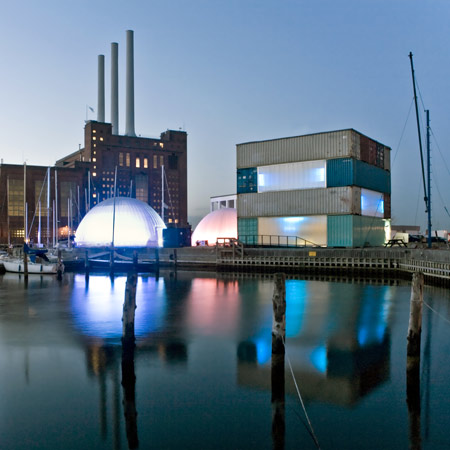
Cop15 pavilion by MAPT
Danish architects MAPT have designed a pavilion in Copenhagen made of recycled materials, including old shipping containers, to coincide with the UN Framework Convention on Climate Change (UNFCCC).
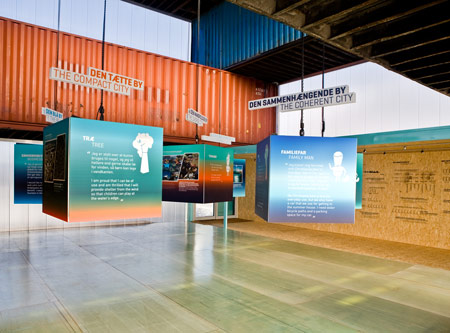
Called Cop 15, the pavilion is made up of surplus products from the wood and wind-turbine industries.
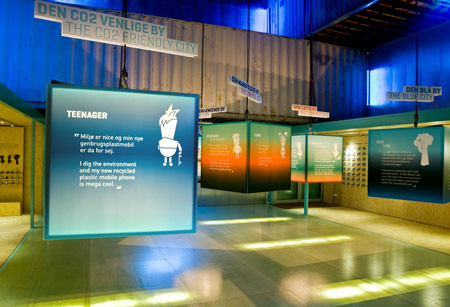
It houses an interactive exhibition focusing on urban sustainability, called Nordhavn (North Harbor). The conference continues until 18 December.
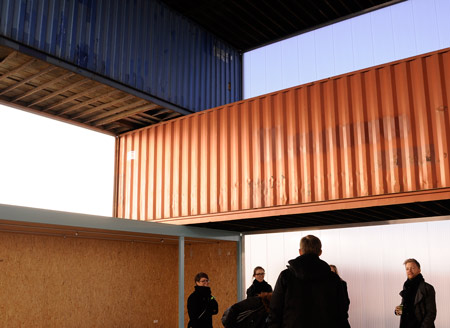
Photographs are by Lars Engelgaar.
Here's some more text from MAPT:
--
The City of Copenhagen’s overall goal for the city’s development is that Copenhagen will become an international, outstanding example of sustainable urban development. The same values form the basis for the framework of the North Harbour Exhibition. The sustainable container-pavilion has been developed by the architect’s office MAPT in collaboration with the City of Copenhagen.
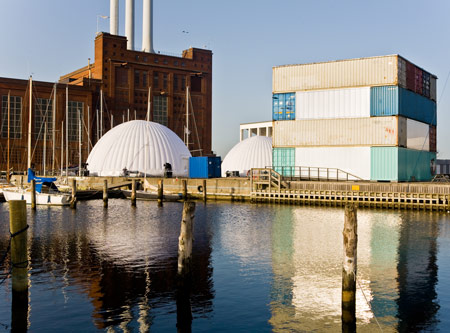
Container graveyard
Containers are a good example of overproduction which can be used for many other purposes than freight. Throughout the world, for example in the USA, you will come across huge, man-made mountains of containers. It is frequently uneconomic to ship containers back again to where they came from, so they are simply left to pile up.
The containers in the pavilion also tell the story of a temporary society, where needs and economies, life-styles and population density are in a constant state of flux. Our cities and our architecture must be geared to this. The pavilion encapsulates the essence of this mentality, demonstrating on a small scale the flexibility inherent in a temporary concept with an inbuilt life cycle. The pavilion’s building blocks can be used in innumerable configurations, according to the needs and demands put upon them.
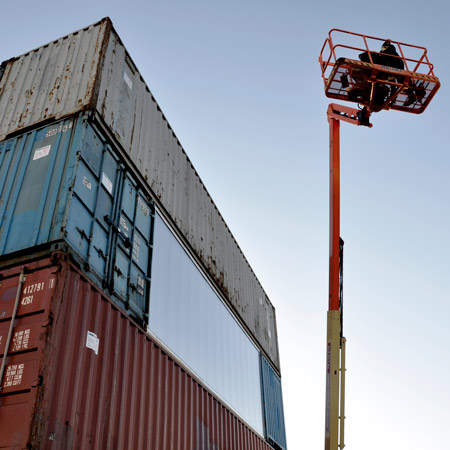
This is not recycling; it is upcycling.
With its pavilion project in the North Harbour Exhibition, MAPT has based its approach on the cradle-to-cradle principle, consigning the use-and-throw-out approach to the graveyard. The idea is simple: take a surplus product like an old, empty shipping container and give it some value again. In this way you have a supremely sustainable solution which can quickly be made exclusive in spite of the materials’ original use.
The pavilion’s containers can easily be reconverted to their life as a shipping container. Their flexibility ensures that they can be split up and used separately. The possibilities are endless. In the future, it will be possible to build both houses and second homes where the principle of sustainability is incorporated from beginning to end. After the exhibition for example, the City of Copenhagen will use two of the containers for cultural events or as venues for local meetings.
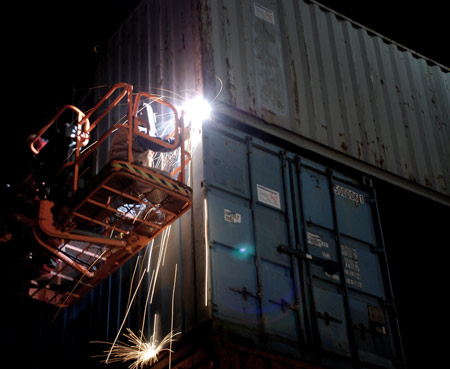
Can you live in a container?
Yes, it is absolutely possible to live in a container. You might think it is like living in a sardine tin! On the contrary, it can be a very spacious experience. The containers are like gigantic building blocks. They can be put together in all sorts of different ways. The sides can be opened up and they can be joined together. Instead of talking square meters, the container solution opens up for cubic meters – high to the ceiling, light and airy.
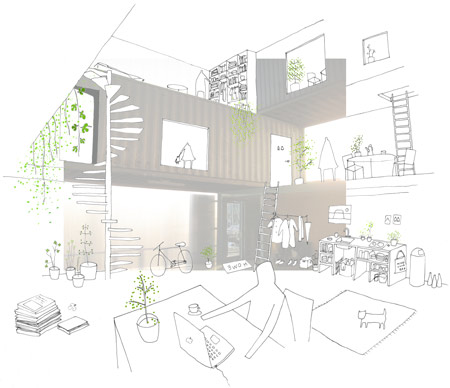
The climate pavilion is a temporary building and so it is uninsulated. If it is going to be used as residential accommodation, a good thick winter coat needs to be put onto it. In this way, a passive house can be built quickly and cheaply.
There are any number of opportunities for creating your very own, unique house. You decide yourself what surfaces you want on the inside. Do you want to see the untreated steel of the container while the floor is covered with boards. There is a whole range of exciting, new and sustainable materials to choose from.
In short, the framework of a sustainable exhibition is to get more out of less. Sophisticated rubbish!

Click for larger image
The interior of the pavilion is rubbish - literally! The materials are surplus products from the wood and wind turbine industries. With its rough finish, the pavilion promotes the idea that recycling can be beautiful if the materials are put together right. It also hints at a new aesthetic, where the story and the content are important. Where do the materials come from, who has produced them and what are they made of?
Sponsored by C,D & ST.